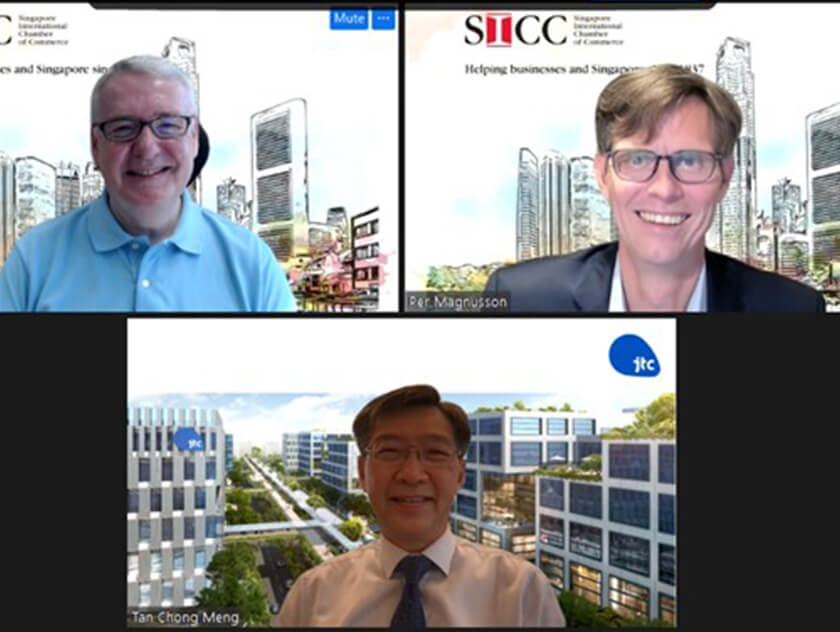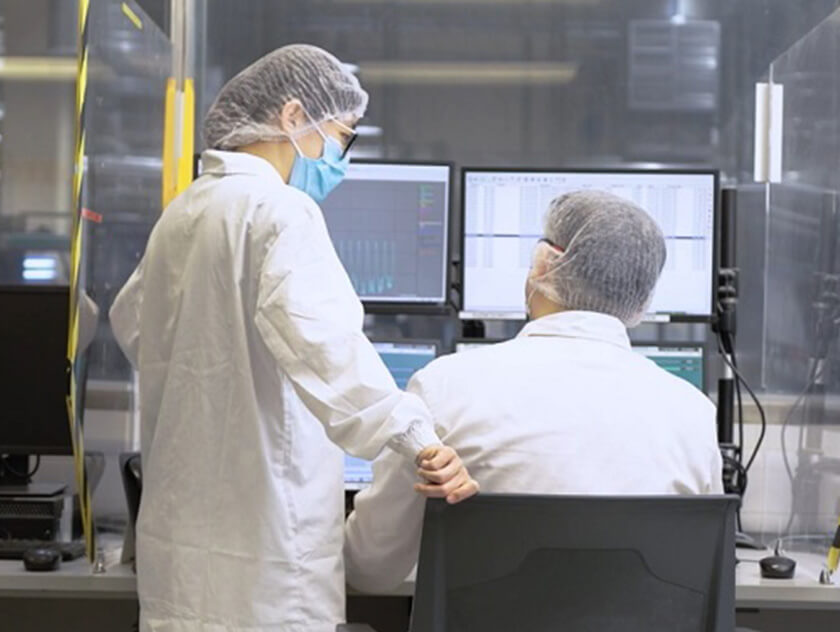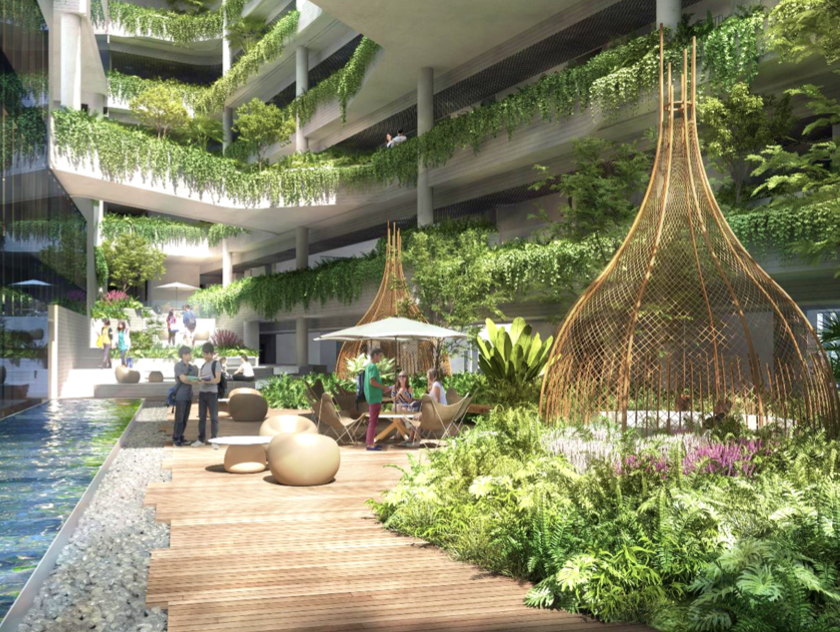Mr Alvin Tan, assistant CEO (ACEO) of JTC’s Industry Cluster Group, sat down with Mr David Kelly, executive director of British Chamber of Commerce Singapore, to discuss JTC’s vision for Singapore’s manufacturing landscape, and how they influence the master planning and development of the upcoming Jurong Innovation District and Punggol Digital District estates. Here are some key takeaways:
Planning districts for a new era of manufacturing requires a different thinking hat
Mr Tan: “Manufacturing is sometimes misunderstood. It is hard to shake off the old image of smoke stack factories and the impression that manufacturing work is sweaty, dirty, or even dangerous. To prepare for the future of manufacturing, JTC is reimagining the way we master plan our districts.
It is no longer just about providing land and supporting infrastructure, but also playing the role of an ecosystem builder to connect the dots and bring businesses and communities together. We think the new phase of Singapore’s manufacturing will be drastically different ― it will be cleaner, smarter, and more collaborative.
As Singapore’s economy evolves, the type of estates and buildings that we develop has also changed. Initially, we started building high-rise factories that supported light assembly manufacturing activities. Subsequently, we developed specialised industrial parks catered to technology-intensive manufacturing, such as our Wafer Fab Parks for semiconductors and Tuas Biomedical Park for the biopharma industry.
We also developed business parks such as one-north, where the concept of mixed-use estates was introduced. This is also where the work-live-play-learn concept was first incorporated in Singapore’s industrial estates.”
Trends in manufacturing, smart city developments, and climate change are influencing the way JTC is developing its estates
“As we look ahead, trends present in the current fourth industrial revolution, or Industry 4.0 (I4.0), will clearly shape our work where as far as manufacturing is concerned. Manufacturing is gearing up to be more technology-intensive while less labour-intensive. This is pretty good news for a small country with a small population. With opportunities present in I4.0, Singapore announced in 2021 that it is looking to grow the manufacturing sector by 50% by 2030.
The other big trend is digitalisation... from a smart city perspective, we also need to consider how technology is integrated into people’s lives, and how data and digital solutions can be harnessed to solve problems, improve lives, or to enable greater efficiency.
The third big challenge is climate change. Sustainability considerations have and will become more important in business decisions. For us, we incorporate sustainability considerations into all our developments and estates, such as maximising passive design, having a high proportion of green coverage, going car-lite, working with our industry partners to deploy solar panels, and implementing district cooling. But we also need to consider using data to optimise energy and water usage so that we can continue to push the frontiers in sustainability.”
Infrastructure, ecosystems, and digital data will enable cleaner, smarter, and more collaborative developments to take shape
“We start with infrastructure where real estate forms a base of how ecosystems develop. We have to develop car-lite, mixed-use districts with work-live-play-learn elements… the key is to be able to integrate the hardware and lifestyle options well so that businesses and talent are attracted to the area.
As far as industry and ecosystems are concerned, it must be curated in a way where businesses, government agencies, research centres and academia in related and adjacent functions are located together. This industry-academia-government nexus is key for partnerships and collaborations.
Lastly, digital data is about how we digitalise and operate our estates using technology and platforms. It's about making data available in order to optimise how energy and water are used, so that we can continually advance efforts on sustainability.”
Our newest districts, Jurong Innovation District and Punggol Digital District, are key examples of how these approaches have been applied.
“Jurong Innovation District (JID), set to be Asia’s leading manufacturing hub, has some unique infrastructure. It has the first underground district logistics network that enhances logistics efficiency and optimises land use. It also has the first 11-kilometre of car-free Sky Corridor for pedestrians, cyclists and autonomous vehicles. You can think of this like a three-layer sandwich: trucks in the basement, cars on the street level and pedestrians on the sky corridor.

The district will also have a biophilic design, so about 30% of the district will have green coverage through multi-level planting and a network of green spine to connect lifts and workspaces. These will come together to provide a different type of environment for manufacturers.
As for Punggol Digital District (PDD), it is the cornerstone of Singapore’s smart nation ambitions, and will house an ecosystem of companies and tech associations together with Singapore Institute of Technology (SIT)’s new university campus.

Built with lifestyle offerings, recreational facilities and integrated with nature, PDD is designed to appeal to businesses and talent alike. With proximity to the university, we believe that businesses can tap into young talent, while students benefit from a full-fledged applied learning environment.
PDD will be the first digital district with full integration of digital infrastructure and smart technologies through the Open Digital Platform (ODP), which will form the digital backbone for the district. Developed by JTC and GovTech, the ODP will integrate smart city technologies in facilities management, security, district cooling, and autonomous goods delivery system within the district to enhance user experience, optimise energy, and resource efficiency.

Beyond this, PDD will be a living lab for test-bedding and experimentation. Those operating in PDD will have access to district-wide data from the ODP, so that players from different verticals or industries can tap on the data to create new products and solutions. The ODP will eventually be implemented at JID as well.”
Watch the full podcast on British Chamber of Commerce Singapore’s YouTube.


